The tips of the leaves of the dracaena dry out, what to do, how to fix the problem

Dracaena is a frequent resident of modern apartments and houses. The plant resembles a palm tree, and is loved by many gardeners for its attractive, unusual appearance. The flower is highly resistant and quite unpretentious. However, difficulties can also arise with this flower. It often happens that dracaenas The tips of the leaves dry out, what should I do in this case?
Content:
- About the plant
- What is care?
- Causes of drying leaf tips
- Ways to correct the situation
- Disease and pest control
About the plant
The flower belongs to the asparagus family, native to Central Africa. Some varieties are native to the Canary Islands, South America and Asia. Natural habitat is the tropics.
Dracaena is popularly called dragon tree or dragon tail. There are many of its subspecies and varieties. Some of the most popular early visions are dracaena bordered and marginata.
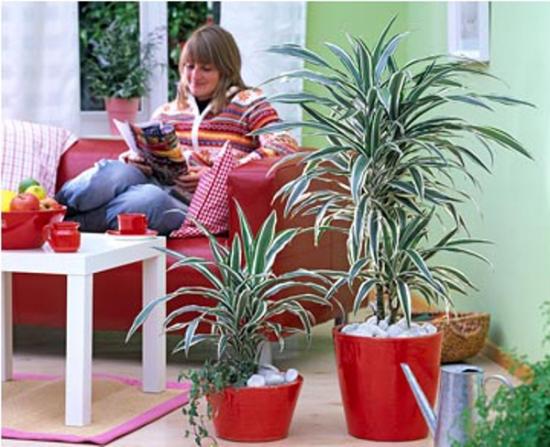
Dracaena is a popular indoor plant. Despite its resemblance to a palm tree, it has much more delicate leaves. Under natural conditions, representatives of different sizes are found - giant specimens, dwarf species. The trunk in the natural environment can reach 2 m in diameter.
At home dracaena, as a rule, does not grow higher than 0.5 m. The foliage is variegated, sometimes has a grayish or bluish tint. The length of each leaf reaches 40-50 cm, the width is small - only 2-3 cm.
It is believed that the flower has positive energy and promotes the development of communication skills in the owner. It also perfectly cleans and freshens the air.
What is care?
Dracaena is a persistent plant. Even a beginner in the flower business can master its care. It is enough to follow the basic rules.
Light and temperature
In its native tropics, the flower grows in places with plenty of sun. The ideal option for indoor dracaena is scattered light. It also tolerates partial shade well. The brighter the color of the leaves, the more lit the place should be chosen to place the flowerpot.
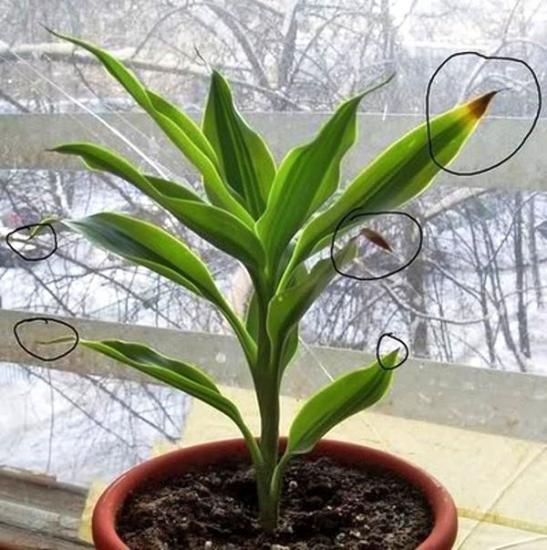
In the warm season, dracaena feels comfortable at + 24 C. In winter, the thermometer readings should not fall below + 15 C. Some varieties of flowers tolerate 10 C well in the cold season. Dracaena should be protected from drafts.
Watering and spraying
The plant loves moisture very much. In summer at high temperatures and low humidity watering carried out daily or every other day. Of course, you need to know when to stop. The soil should be monitored; there should be no “swamp”, otherwise the roots may rot. In winter, the amount of watering is reduced.
Spraying has a beneficial effect on dracaena. Many varieties often require this procedure. You can also wipe the foliage with a damp flannel cloth or soft sponge.
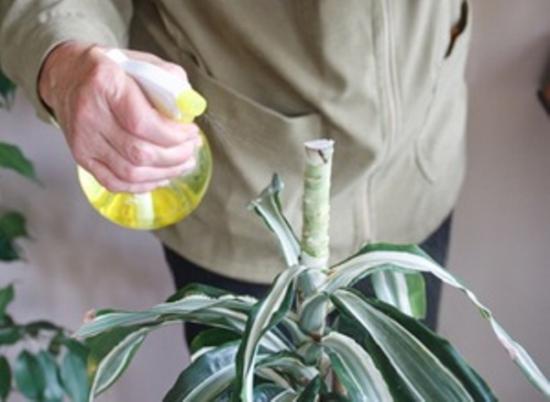
Soil and fertilizers
Dracaena has no complaints about the soil. Almost any mixture will work for it. The main condition is priming should be loose and allow moisture to pass through well. The ideal option is a mixture of turf, peat, leaf soil and sand. Drainage is placed at the bottom.
It is advisable to use fertilizing in spring and summer. Fertilize the flower once or twice a month.You can buy ready-made complex mineral supplements at a flower shop.
Causes of drying leaf tips
A common problem is dracaenas The tips of the leaves dry out, what can you do in such a situation and what should you not do? Sooner or later, almost all owners of this flower face a similar situation.
The lifespan of the leaves is about two years. Specimens that have outlived their useful life begin to dry out at the tips. This is a normal process. However, it happens that young foliage turns yellow. This can happen for a number of reasons.
Improper watering
One of the most common causes of yellowing and falling leaves is improper watering. If the soil is moistened too frequently and intensively, the roots begin to rot. As a result, the leaves turn yellow and rot covers the stem. Also, the tips of the leaves dry out when there is a lack of water, too scanty and infrequent watering.
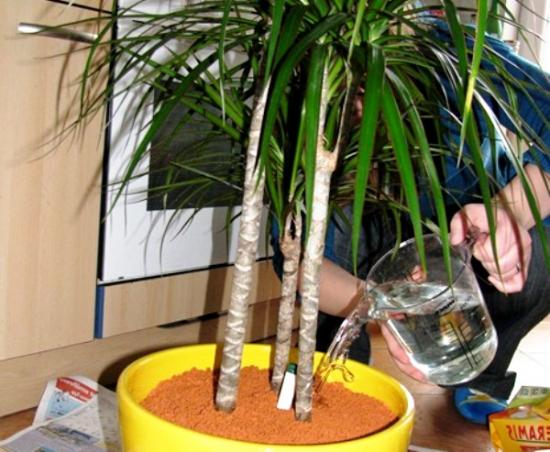
Unfavorable location and draft
The flower does not like extreme cold and drafts in the room. Do not place the pot with the plant on cold windowsills, in places where the air conditioner is directed. The foliage reacts to wind and low temperatures by drying out.
Lack of nutrients
Although dracaena has no complaints about the soil, if the soil is poor or old, problems with the leaves may occur. The composition of the soil is disrupted over time due to watering with hard water. Soil density plays an important role. Compacted soil impedes the development of the root system and the plant as a whole.
Direct sunlight
Dracaena prefers to be in partial shade or in diffused light. If the sun hits the leaves, they inevitably begin to become covered with spots, turn yellow and dry. Do not place the flower in direct sunlight.
Dry air
The tips of dracaena leaves may dry out due to too low air humidity in the room. During the heating season, the level is only 30%, while the flower requires at least 50%, and preferably 60-70%.
Ways to correct the situation
Flower growers are interested: the tips of the leaves of the dracaena dry out - what to do, can they be cut off? Dried areas are removed along the edges so that they do not spoil the appearance of the plant. Trimming alone will not fix the problem. It takes effort.
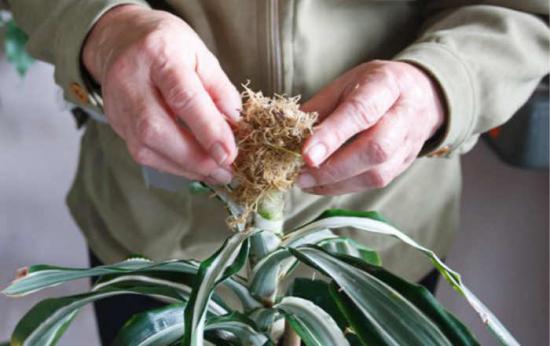
Organize sufficient, but at the same time moderate watering. You need to add water every 3-4 days, in the summer once every 1-2 days. Adjust the intensity of watering depending on the temperature and humidity.
Get into the habit of spraying your flower regularly. This will help increase the humidity in the room. Make sure that water does not stagnate in the leaf axils. Spraying refreshes the flower and gives it strength.
When the roots rot, the dracaena is removed from the soil, the damaged areas are cut off and the cut is dipped in crushed wood ash. After this, transplantation into fresh soil is carried out. If there is too much rot, the problem can only be solved by cuttings.
Provide the dracaena with loose soil with a drainage base. If the soil is compacted, replant the flower in new loose soil.
To prevent leaves from drying out, fertilize the soil during intensive growth. Nitrogenous ones are suitable fertilizers. Feeding should begin at the beginning of spring and continue until the end of summer.
Pest and disease control
Pests and diseases also cause leaf tips to dry out. Diseases and parasites are transmitted to dracaena from other plants.
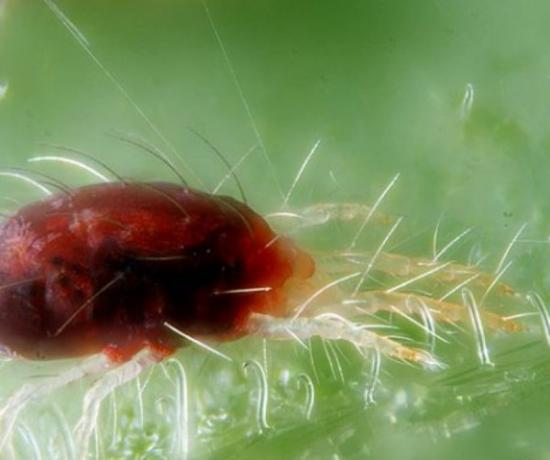
Shield. Infestation with scale insects is indicated by the appearance of red-brown spots.The scale insect feeds on the sap of the plant, after which the leaves turn yellow and fall off. To eliminate the problem, special chemicals are used. The result is also achieved by rubbing with a soap solution.
Thrips
Due to pests, the foliage takes on a grayish tint. Inta-vir and Decis eliminate the problem.
Spider mite
Infection is indicated by the appearance of white spots and yellowing of leaves. To combat, use the chemical “Acaricide” and a regular soap solution.
Heterosporosis
A fungal disease causes yellow and brown spots to appear.
Phyllosticosis
With this disease, brown spots with a yellow border form on the flower. To treat heterospora and phyllosticosis, spray with fungicides.
Flower growers very often encounter drying of the tips of leaves. dracaenas. First, they determine whether this is a natural phenomenon or a sign of some kind of problem. In certain cases, they resort to chemicals and fertilizers. To improve the situation, it is often enough to optimize living conditions and care.
The tips of the leaves of the dracaena dry out, what to do - watch the video:

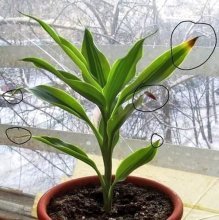
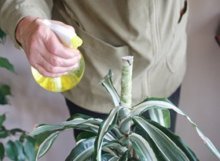
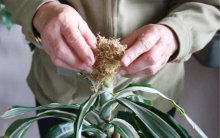

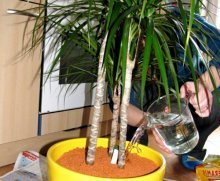
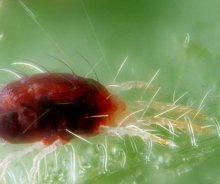

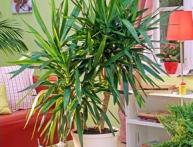
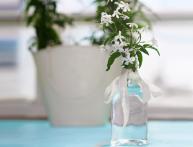
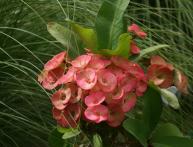
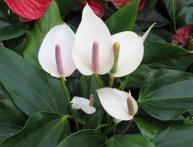


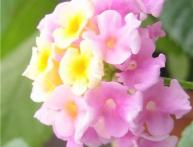
Comments
In our dracaena, the tips of the leaves also dry out. Judging by the recommendations in the article, there are 3 possible reasons - a draft, because the plant is standing near the balcony door, depletion of the soil in the pot, or rare watering and infrequent spraying of the leaves of the flower.